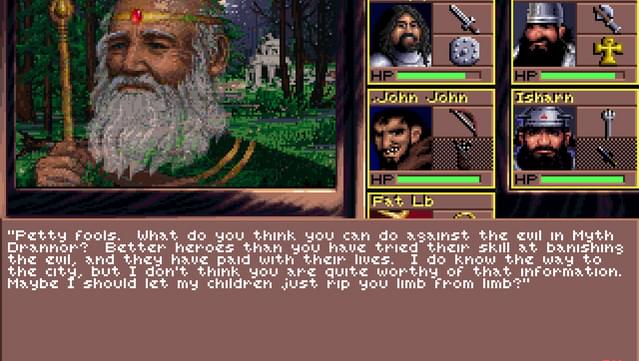

The rules for non-human races are a bit less draconian than in the Gold Box series for instance, elves and half-elves never hit a cap in any class they're allowed to select, and dwarves only cap as clerics. You choose from the six usual races (human, elf, half-elf, dwarf, gnome, halfling) and six classes (paladin, fighter, ranger, cleric, mage, thief) including multi-classes. The game has the party start with a "Commission and Letter of Marque" giving the party "full rights of passage beneath the City of Waterdeep," as if some guard was going to come along and question our right to be in the sewers.Ĭharacter creation is all standard AD&D. The problems seem to be coming from beneath the city, and so the chief Lord, Piergeiron, has commissioned a party of adventurers to enter the underworld and eradicate the threat. Something or someone named Xanathar-I'm going to go out on a limb and say it's probably a beholder-is causing trouble for the city, but the nature of the trouble is left undefined.
#Eye of the beholder controls manual#
The manual goes into the long history of Waterdeep and its constant transfers of power between various guilds and factions before finally coming into the rule of the semi-anonymous Lords of Waterdeep. Taking place in the city of Waterdeep, this is the first CRPG on the Sword Coast, and I was delighted to see Baldur's Gate, Amn, and Neverwinter on the game map. Unless I'm missing some bit of documentation, the backstory to Eye of the Beholder is left somewhat vague. Even though the door is in the space in front of you, it comes down behind any enemies in that space. If there's one thing you'd want a developer to copy from Dungeon Master, it's the ability to crush enemies in doors. And of course, being a later game, Eye of the Beholder has better graphics, sound, and animation, though not staggeringly so. There are a few differences, mostly caused by the integration of a Dungeon Master mechanic with AD&D rules: classes are different, the magic system is different, and leveling is by experience rather than use of skills. Tossing a dagger at an approaching giant worm. Many treasures are found in little alcoves on the wall. The puzzles are also the same, involving hidden buttons, weighted pressure plates, and remote door switches. You can do the same sort of real-time tricks, like the side-step attack dance and the fighting backpedal. Picking up thrown missile weapons is tedious. Only the front two characters can attack in melee rear characters can throw missile weapons, and they have a pouch which automatically restocks them with up to four "refills" in the same combat. You attack enemies in the same kind of interface by right-clicking on the chosen weapon, which makes a "whoosh" sound and requires a cool-down period before you can attack again. The similarities are readily apparent at the macro level-they're both first-person, multi-character, tile-based, real-time dungeon crawlers-and the micro level. You're going to make a good game, or we're going to bury you." I like to think that the Westwood folks left the meeting shaken, threw back a few drinks, and decided that to avoid screwing this one up too badly, they'd better just copy Dungeon Master.Įye of the Beholder's dependence on Dungeon Master is so stark that you wonder why there weren't lawsuits involved. "We're going to give you another contract," they said in my fantasy, "but none of your bull$%#t this time. I like to imagine that after Hillsfar, SSI had a "come to Jesus" meeting with Westwood. The first Westwood/SSI pairing, Hillsfar, was flawed at the outset.

Years later, I'm still mad at them about the endings to BattleTech: The Crescent Hawk's Inception and Mines of Titan. Westwood and I do not have a good history.


 0 kommentar(er)
0 kommentar(er)
